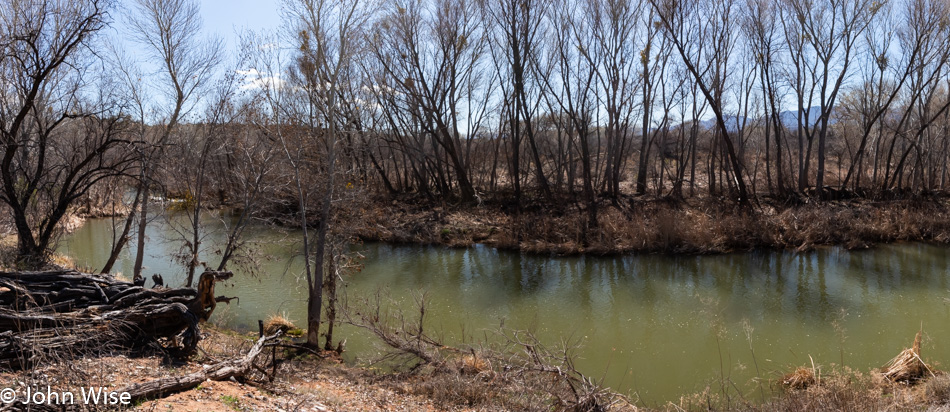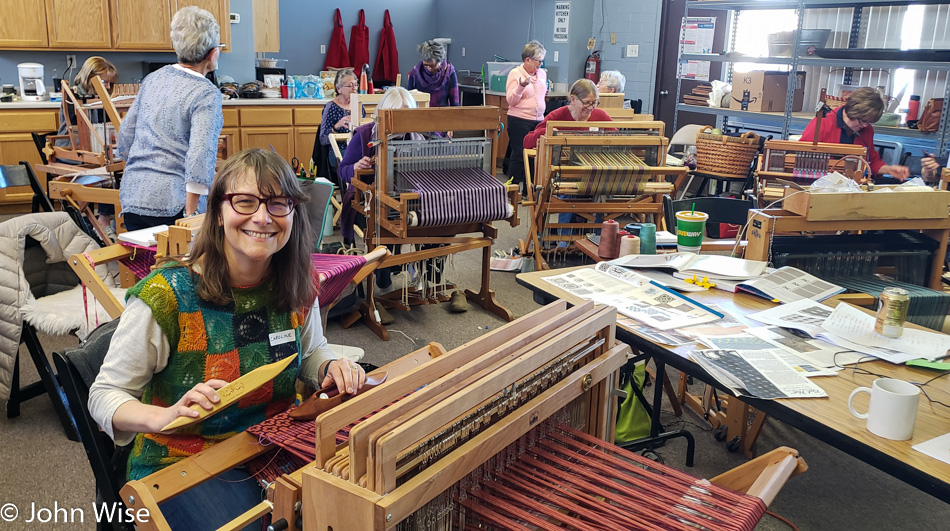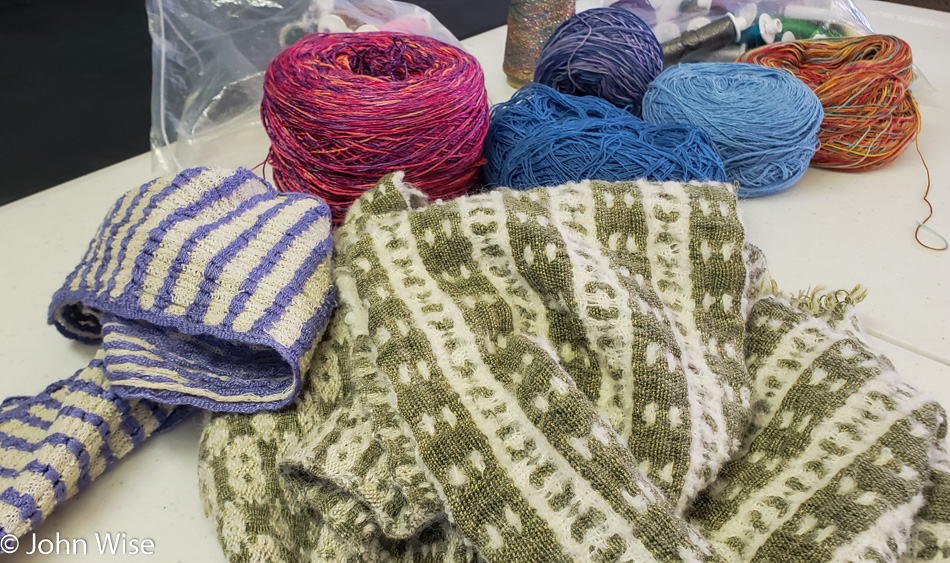
If you read my previous two entries, you might be inclined to think I’m moving onto a theme, but what fun would that be? This has been quite a nice weekend, really, Saturday Caroline went to Sahuaro Ranch Park, where the annual Glendale Folk Festival was taking place. Various fiber artists committed to being on hand to demonstrate the crafts of spinning, weaving, and other aspects of the art. After hanging out a bit, I took off for some writing before heading back in the afternoon for the two of us to go grab lunch. Today, we headed north out of Phoenix up to Tuzigoot National Monument in Clarkdale, Arizona.

The reason for this particular visit was in some way similar to our previous one in 2017, when we drove up to attend a presentation by archaeologist Zack Curcija, except today we are interested in meeting Hopi weaver Davis R. Maho, who’s presenting his work. Davis is also known as The Hopi Roses. Our first question for the guy was how long he’s been practicing this particular art, and we learned that it was just five years ago at the Hopitutuqaiki, also known as The Hopi School, where he started learning to weave.

Davis is a modest weaver admitting he’s still on the learning curve with a lot of curiosity to explore far more about the art than he’s done yet. He mentioned his interest in natural dyes before telling us that he, in fact, spins his own yarn. Intrigued, I asked if he uses a hip spindle or a spinning wheel, but his answer elicited a laugh-out-loud chuckle when he told us that he uses a drill motor. I never thought that this would be the intersection where modern and ancient techniques met.

Back outside, we enjoyed a short hour-long, two-mile walk out to the Tavasci Marsh next to the Verde River. Cattails, grasses, mesquite trees, and some large cottonwood trees punctuate the marsh, and while we were told to be aware of snakes, sadly, none were seen.

Lunch was had at a local grill in the trendy old town of Cottonwood, but the highlight was caused by how crowded the place was. You see, Caroline and I got the last table, but a friendly enough couple walked in after us and accepted our invitation to have them join our table if they didn’t feel like sitting outside. Rose and Bill are a retired couple from Phoenix who now live over in Rimrock. Sharing the table was not like sitting with two people who wanted to be alone; it was like having lunch with a couple of our relatives. Our hour spent with these two was filled with smiles.

Afterward, we sat down somewhere else for a coffee and a bit of writing while Caroline got some knitting in before we headed south for our 90-minute drive home. This was our Sunday.











